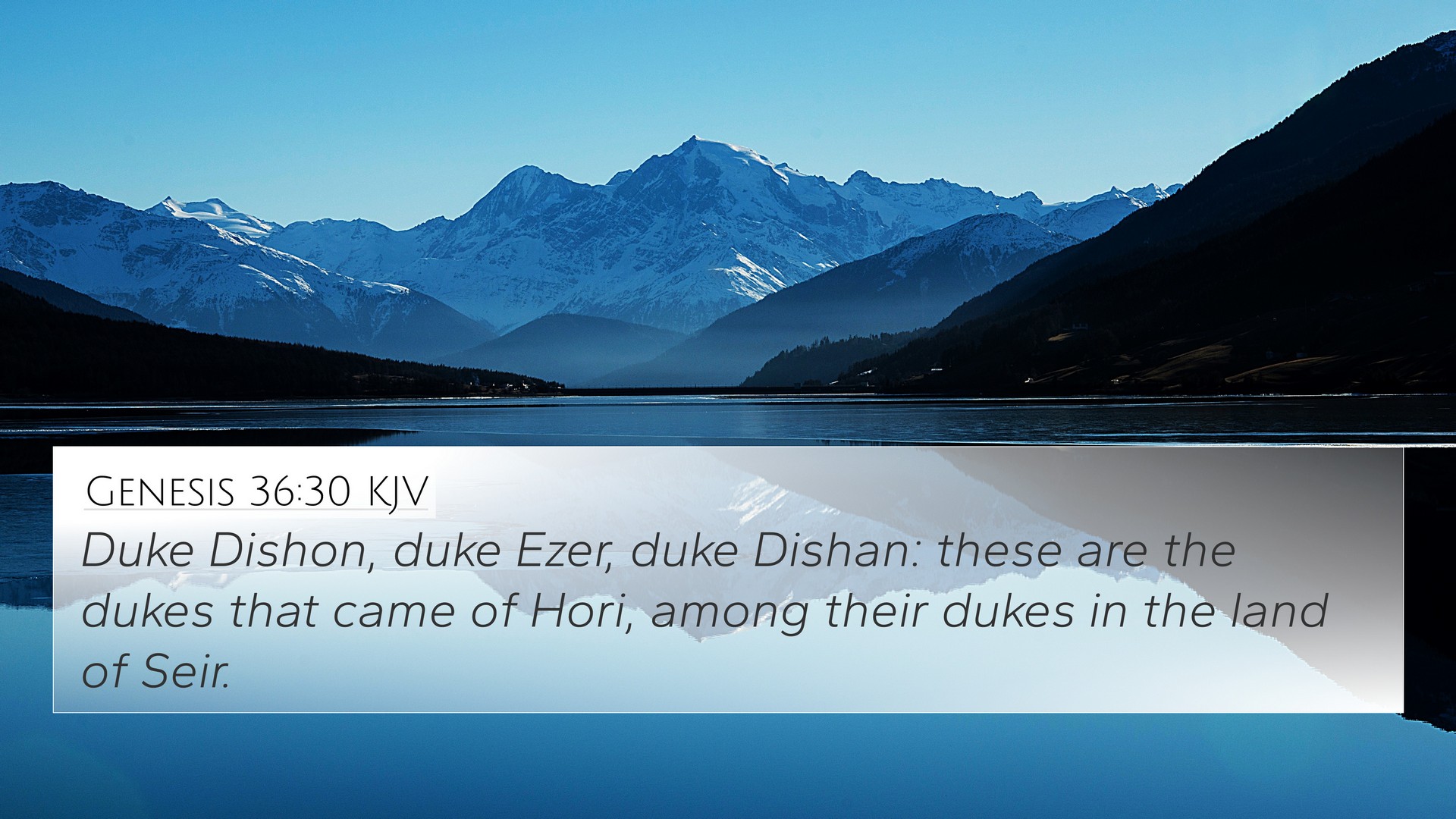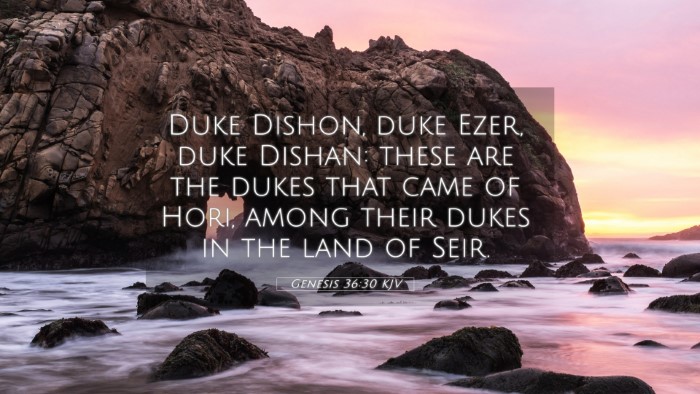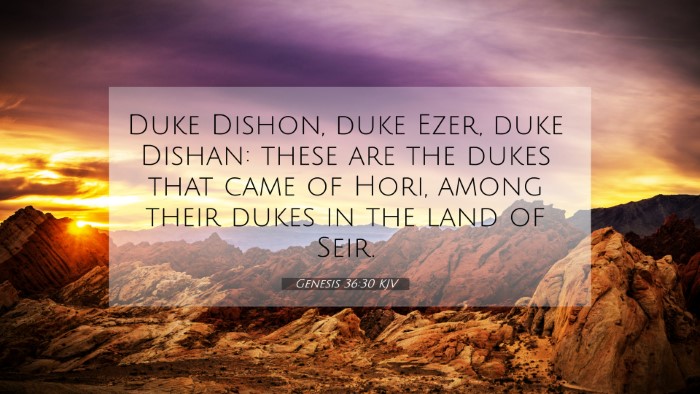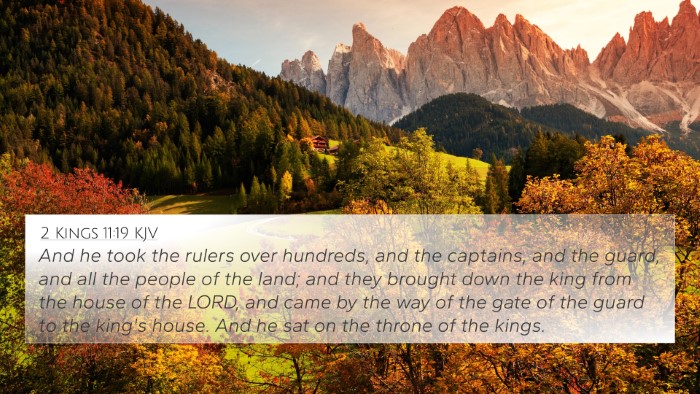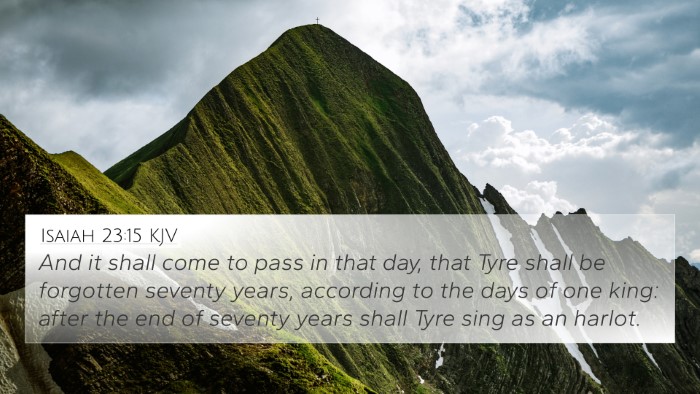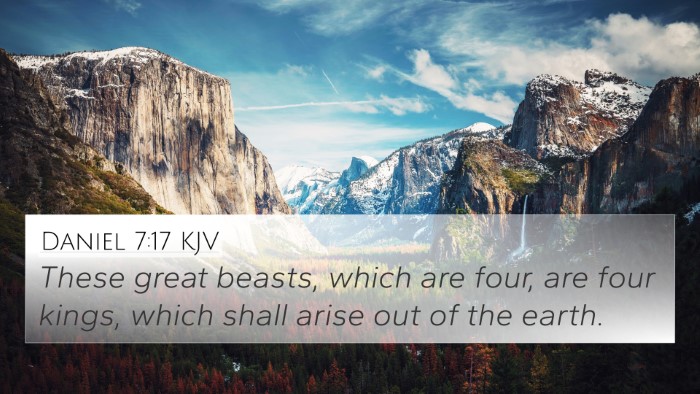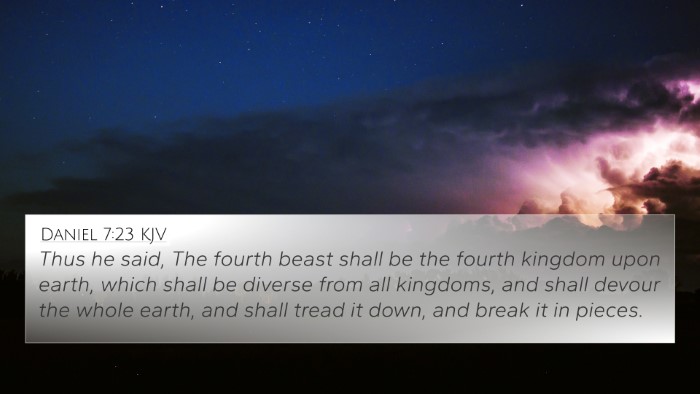Understanding Genesis 36:30
Genesis 36:30 reads: "Dukes of the Horites: Duke Lotan, Duke Shobal, Duke Zibeon, Duke Anah," which introduces the lineage and titles of the descendants of Esau as detailed in the genealogical records of the patriarchs.
Overview of Genesis 36
The chapter outlines the lineage of the Edomites, originating from Esau, Jacob’s brother. It serves as a historical account of the nations that descended from him and their territories.
Commentary Insights
- Matthew Henry: Matthew Henry emphasizes the importance of genealogies in the Bible, highlighting that these records not only serve to document family lines but also to affirm God’s promises regarding the nations that would emerge from the patriarchs. He notes that the dukes listed represent the tribal leaders of the Edomites, signifying a structured society.
- Albert Barnes: Albert Barnes discusses the significance of the names and titles, indicating that they reflect the culture and social structure of the Edomites. Each duke mentioned presumably held authority over a distinct territory, marking an organized governance system within Edom.
- Adam Clarke: Adam Clarke points out that the naming of dukes indicates a societal hierarchy. He suggests that these records serve to provide insight into the historical context of the Israelite narrative, presenting a contrast between the lineage of Jacob and Esau.
Thematic Connections
This verse not only provides a genealogy but also prompts discussions on themes of legacy and identity. The descendants of Esau are influential in establishing the backdrop for later interactions between the Israelites and Edomites, which is a recurring theme in Scripture.
Bible Verse Cross-References
- Genesis 25:30: "And Esau said to Jacob, 'Feed me, I pray thee, with that same red pottage; for I am faint: therefore was his name called Edom.'" - Relates to Esau's identity.
- Deuteronomy 2:5: "Distress not the Edomites; for I will not give you of their land." - Highlights Israel's relationship with Edom.
- Obadiah 1:10: "For thy violence against thy brother Jacob shame shall cover thee." - Discusses the antagonism between the Edomites and Israelites.
- Genesis 36:1: "Now these are the generations of Esau, who is Edom." - Introduces the line of Esau and his connection to Edom.
- Numbers 20:14: "And Moses sent messengers from Kadesh unto the king of Edom." - Early interactions of Israel with Edom.
- Malachi 1:2-3: "I have loved you, saith the LORD. Yet ye say, Wherein hast thou loved us? Was not Esau Jacob's brother?" - Explores the divine perspective on the nations descending from these patriarchs.
- 2 Kings 8:20: "In his days Edom revolted from under the hand of Judah..." - Historical relevance of Edom's governance structure.
Analytical Insights
Genesis 36:30 represents a microcosm of the broader narrative of familial relationships and divine sovereignty in the Biblical storyline. The structured presentation of Esau's lineage suggests themes of order amid conflict and highlights God's overarching plan through these nations.
Applying Cross-Referencing Techniques
Using tools for Bible cross-referencing, Christians can draw thematic connections between these genealogies and the broader narrative of redemption. By examining these verses study methods, one can uncover the intricate relationships and dialogues present in the scriptures.
Conclusion
In studying Genesis 36:30, one sees how genealogical records intertwine through various passages and reflect the multifaceted relationships among nations in the biblical narrative. These insights not only deepen understanding of God's providential design but also provide practical applications for cross-referencing Bible verses in personal study.
